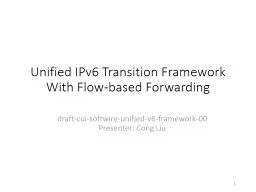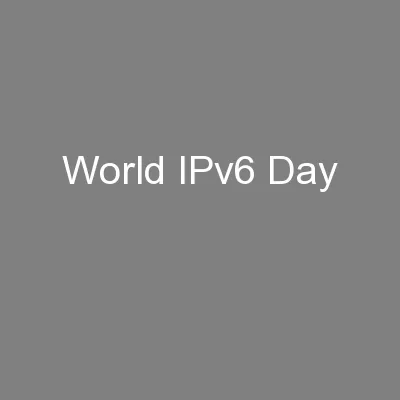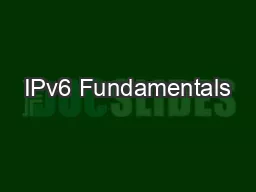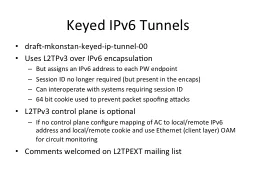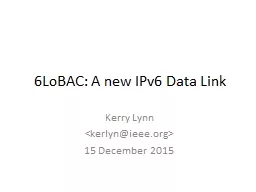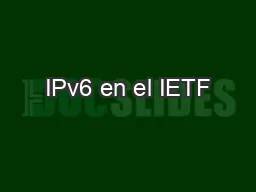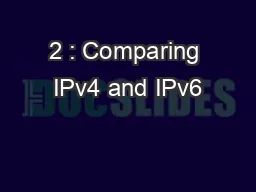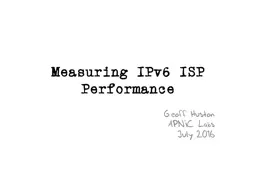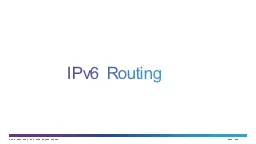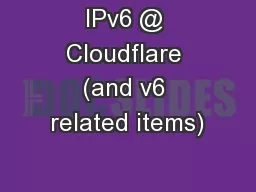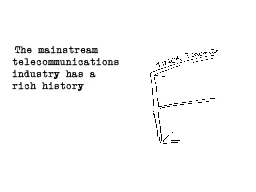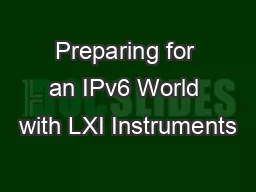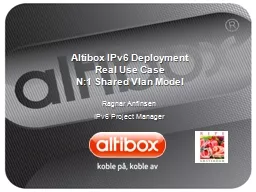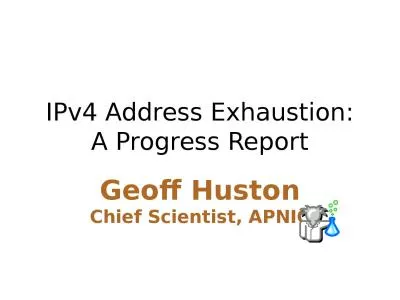PPT-Unified IPv6 Transition Framework
Author : trish-goza | Published Date : 2016-06-24
With Flowbased Forwarding draftcuisoftwireunifiedv6framework00 Presenter Cong Liu 1 Motivation There has been many softwire transition mechanisms Generally look
Presentation Embed Code
Download Presentation
Download Presentation The PPT/PDF document "Unified IPv6 Transition Framework" is the property of its rightful owner. Permission is granted to download and print the materials on this website for personal, non-commercial use only, and to display it on your personal computer provided you do not modify the materials and that you retain all copyright notices contained in the materials. By downloading content from our website, you accept the terms of this agreement.
Unified IPv6 Transition Framework: Transcript
Download Rules Of Document
"Unified IPv6 Transition Framework"The content belongs to its owner. You may download and print it for personal use, without modification, and keep all copyright notices. By downloading, you agree to these terms.
Related Documents

